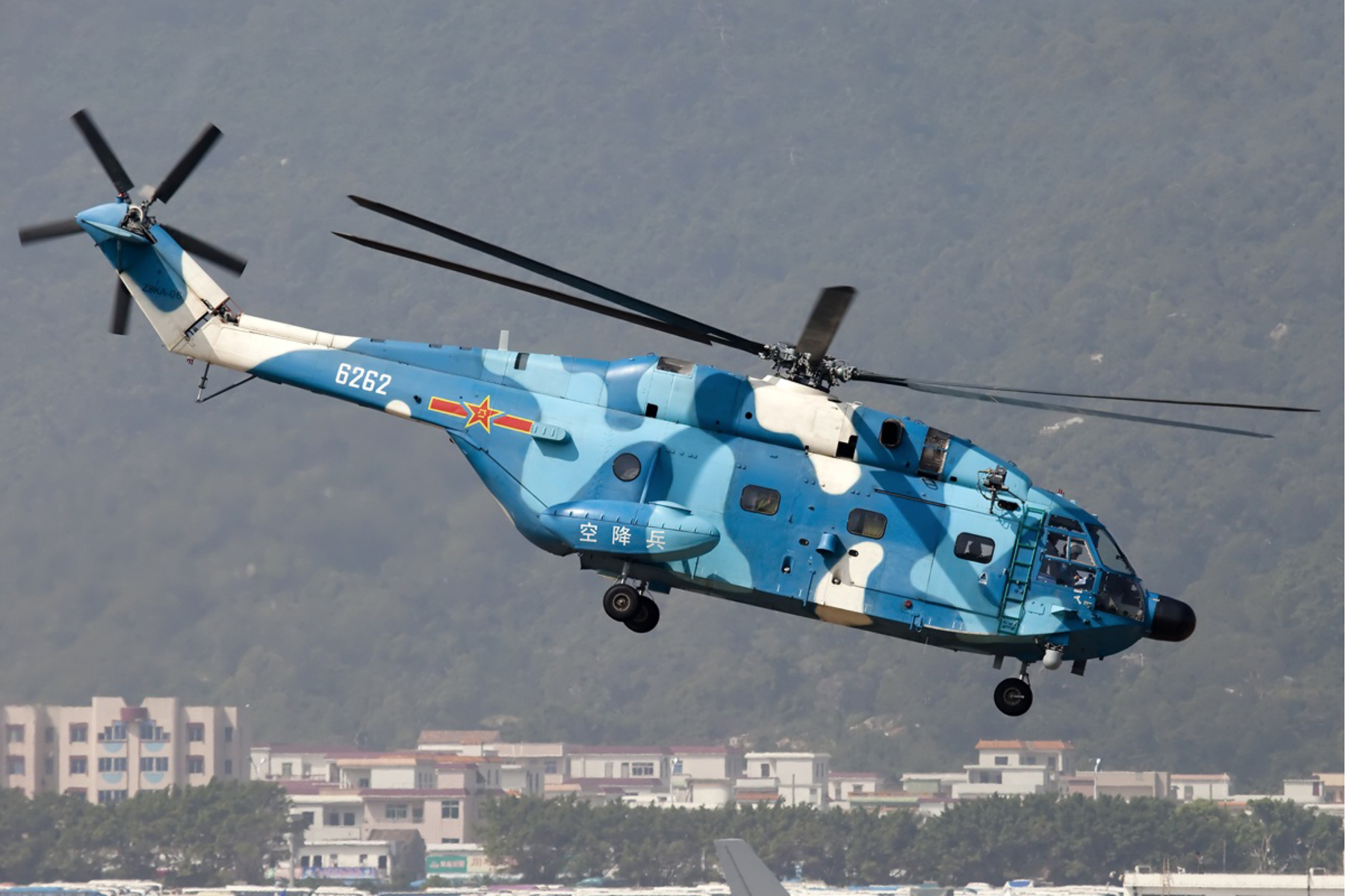
PLAAF Airborne Z-8 Helicopter (says airborne in white over the wheels) PLAAF Changhe Z-8KA – Zhao.
The brigade plans to further test combat support functions for the drones and improve logistical sustainment methods for airborne operations to improve combat effectiveness.
China’s People’s Liberation Army (PLA) continues to refine the use of unmanned aerial vehicles (UAVs) for tactical resupply through their integration into exercises. As noted in state media outlet Science and Technology Daily, a recent exercise held in the mountainous terrain of central Yunnan province describes a PLA Air Force (PLAAF) Airborne Corps brigade using UAVs to resupply units engaged in a firefight and help evacuate casualties.
The “key point seizure” exercise featured a drone swarm working in concert with the airborne assault team as it maneuvered, resupplying units just as they reached defensive positions determined by a company commander. Other reporting on the exercise indicated that medium UAVs could deliver 50kg of ammunition. Participants in the exercise noted that the addition of UAVs greatly simplified logistical resupply for the units.
Exercises in 2020 involving the PLA Joint Logistics Support Force tested delivering munitions to front-line units, and in a separate exercise, providing hot meals and water to border troops in politically sensitive or logistically difficult-to-access areas. (See “PLA Fields New Rapid-Assembly Camp System,” OE Watch, November 2020). The same month the PLAAF Airborne Corps conducted tactical replenishment exercises in Hubei province. (See “China: Improving Capability in Replenishment Operations Through Drones”).
Source:
Peng Yueyun and Qi Yongqiang, “无人机参与助攻空降作战有了新帮手(Drones participate in assists and airborne operations have new helpers),” Science and Technology Daily (State media outlet managed by the PRC Ministry of Science and Technology), 10 December 2021.
http://www.stdaily.com/kjrb/kjrbbm/2021-12/10/content_1237995.shtml
OR
“Begin the attack on the closest position!” Following the command of Li Qilong [李齐龙], the commander of a company under an airborne brigade, members of the unit charged bravely towards the “enemy” position. The unit is engaged in a ‘key point seizure’ exercise in an unidentified location in central Yunnan.
After their initial charge, the enemy was able to suppress the attackers. The lead assault team leader called out “Running low on ammunition! Requesting resupply!”
Standing by the radio in the rear, commander Li marked Ren’s location on the drone control terminal, issuing orders for supplies and a flight path. One minute later, a medium UAV with nearly a hundred kilograms of heavy equipment quickly lifted off and flew toward the battle. Thanks to the timely resupply, the attacking unit could renew their assault.
In this exercise, the brigade embedded transport drones in its support operations, making full use of their advantages in terms of ability to cover long distances quickly, with great precision and in spite of rugged terrain—advantages that traditional resupply methods overland or via large, vulnerable transport lack.
On the front lines of the battle, the firing is intense, and the support team has continued to take casualties even as neither side has gained the advantage. “Requesting casevac.” A signal from the assisting team came from the radio. In the rear, the rotors of a large UAV spin up under the operated by Chen Yao [陈遥], leader of the integrated support team. Hugging the ground, the drone dodges enemy fire while making its way toward the requested location of the ‘wounded,’ beaming back information to the support team.
“Found them,” Chen Yao said as he put the drone into a rapid descent. With the assistance of ground combatants, one of the simulated casualties was dispatched to the rear.
“Shift your position and prepare to defend!” After pushing the assault, company commander Li Qilong quickly pivoted to defense while coordinating resupply using the UAVs. A few minutes later, as coordinates for defensive positions were issued [to the attacking units], a “swarm” composed of eight quadrotor drones took off in succession, beginning “multi-target precision resupply operations.” Despite being spread out over more than ten kilometers, the “swarm” independently coordinated and accurately positioned themselves to quickly deliver emergency supplies from the rear to the new defensive positions.
Li described the transport drones as “Fast, stealthy and precise,” noting that “[due to their support] the length of the battle was reduced by nearly an hour and the number of casualties has been greatly reduced.”
The brigade plans to test combat support functions for the drones further and improve logistical sustainment methods for airborne operations to improve combat effectiveness.
Image Information:
Image: PLAAF Airborne Z-8 Helicopter (says airborne in white over the wheels) PLAAF Changhe Z-8KA – Zhao. https://upload.wikimedia.org/wikipedia/commons/5/5c/PLAAF_Changhe_Z-8KA_-_Zhao.jpg
Source: Allen Zhao, https://commons.wikimedia.org/wiki/
Attribution:
